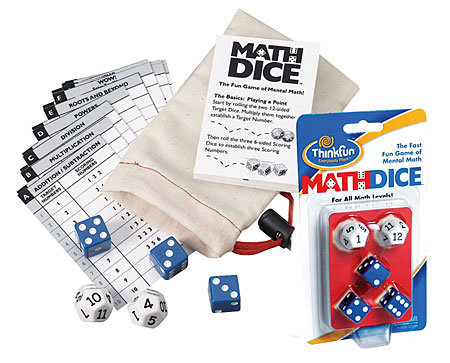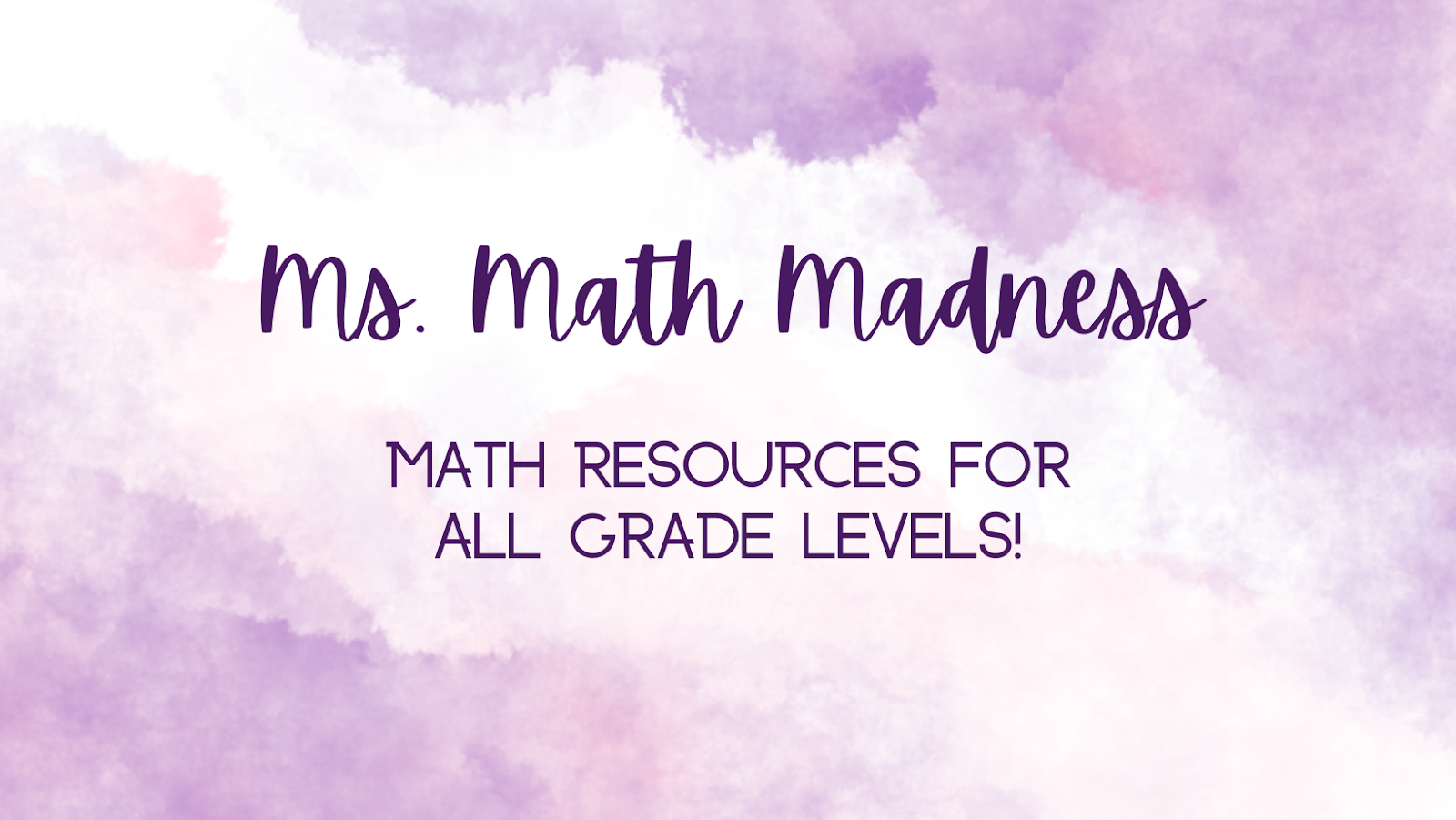Order of Operations
The very first lesson I will be doing with my 7th graders this year is on the Order of Operations. They have already been exposed to this concept in 5th and 6th grade (and probably even earlier than that), but some still struggle (especially with expressions containing many terms and operations).
PEMDAS is the most common mnemonic device for the order of operations. While I love "Please Excuse My Dear Aunt Sally", I have stopped using it the last few years. I found that kids were following the letters exactly how they are written, not realizing that you multiply and divide going from left to right and then add and subtract in the same manner (despite how many times I told them).
So, I switched to GEMS a few years ago and really like it. GEMS stands for: Grouping Symbols, Exponents, Multiply or Divide, Subtract or Add. I'm a big fan of GEMS for two main reasons:
PEMDAS is the most common mnemonic device for the order of operations. While I love "Please Excuse My Dear Aunt Sally", I have stopped using it the last few years. I found that kids were following the letters exactly how they are written, not realizing that you multiply and divide going from left to right and then add and subtract in the same manner (despite how many times I told them).
So, I switched to GEMS a few years ago and really like it. GEMS stands for: Grouping Symbols, Exponents, Multiply or Divide, Subtract or Add. I'm a big fan of GEMS for two main reasons:
- The G helps my students remember that it's not just parentheses we're looking for in the beginning...it's also brackets and fraction bars.
- The S (instead of an A) reminds the kids that you can subtract before adding. Just move left to right. (This also helps them realize the same applies for multiplication and division.)
I had fun making the Order of Operations page in our interactive notebooks. It's the very first "real" page! Instead of using a foldable, I used four small Post-It Notes (one for G, E, M, and S). I'm going to have the students write what each letter stands for underneath the Post-It. I then included some sample problems where I highlighted what was done in each step.
I left page 2 bank for now. My plan is to give the kids a quick pre-test before the lesson, and then give them problems for page 2 based on their understanding of the topic. They will paste the problems in, then solve (showing ALL work, of course!).
I also found this very entertaining music video to show my classes on the Smartboard. It uses PEMDAS, but I'm okay with that (they learn PEMDAS in previous years anyway).
Here is the link to the site with the video. They have some great ones!
One of my big goals this year (besides the new interactive notebooks) is to use more centers/stations in my class. My plan is to designate at least one day a week for just that. I found a few ideas that I can use for Order of Operations. The first is a dice game. It's free too. This game can be played in small groups or partners. One student rolls a dice and all students place that number on their board. The object is to get the largest answer. I may create my own boards that are a bit more challenging. I will laminate them for future use. You can find the game here.
Another center activity that I'm planning will be using a container of brightly colored tiles that I already have in my classroom. Each tile has a different expression on it (such as 12 / 3 + 7). I'm thinking of having two students play against each other at a time. I'll write target numbers on index cards. Each student will have to try to put some expression tiles together to make one expression that equals the target number. I can't find the tiles online, but I will take a picture of them next time I'm in my classroom!
I plan on using this dice game as well. I have a few set in my class already. Students roll a target number and then need to use the other three dice to somehow equal that target.
Another center activity that I'm planning will be using a container of brightly colored tiles that I already have in my classroom. Each tile has a different expression on it (such as 12 / 3 + 7). I'm thinking of having two students play against each other at a time. I'll write target numbers on index cards. Each student will have to try to put some expression tiles together to make one expression that equals the target number. I can't find the tiles online, but I will take a picture of them next time I'm in my classroom!
I plan on using this dice game as well. I have a few set in my class already. Students roll a target number and then need to use the other three dice to somehow equal that target.
 |
| Get the game here. |
Equate is another game I can use as a center. It's basically Scrabble, but with numbers and operational symbols.
I also found these "I Have, Who Has..." cards to use with the whole class. I love using this type of activity. The cards are also free. There are only 24 though (and I have 26 or 27 in each class), so I will have to either add a few more or just make my own set. Get the cards here.
Last, but not least, I found an Order of Operations Jeopardy PowerPoint game. It's $5.00. But, I'm not sure if I'm going to get it yet. I think I already have A LOT for this topic. It does look cool though! You can check it out here.
I'm very excited to put all these ideas to use in September! I will definitely let you know how it goes. What works for you when teaching the Order of Operations? I'd love to hear your ideas!
 |
| You can get Equate here. |
I also found these "I Have, Who Has..." cards to use with the whole class. I love using this type of activity. The cards are also free. There are only 24 though (and I have 26 or 27 in each class), so I will have to either add a few more or just make my own set. Get the cards here.
Last, but not least, I found an Order of Operations Jeopardy PowerPoint game. It's $5.00. But, I'm not sure if I'm going to get it yet. I think I already have A LOT for this topic. It does look cool though! You can check it out here.
I'm very excited to put all these ideas to use in September! I will definitely let you know how it goes. What works for you when teaching the Order of Operations? I'd love to hear your ideas!



I use GEMS too and LOVE it. I bought a set of LARGE gems (in the shape of a diamond) and tons of very tiny adhesive gems at a party store online. When student come in, they all get one large gem to hold. I teach them GEMS and tell them to make sure their work looks like the diamond shape, large at the top and getting smaller. We also draw the upside down "carat" (pun intended). At the end of the lesson, they get to pick their own little gem to stick in the INB and help them remember. I love the post-it idea too! I'm adding this. Thanks so much for the great ideas! :)
ReplyDeleteJulie
@jreulbach
I like your gem sticker idea! Thanks.
DeleteGEMS is interesting. I hadn't heard of that. Thanks for sharing the video. I just made something for PEMDAS for my 5th grade math class. We're starting to learn that this week and I look forward to showing the video. I made a foldable for my kiddos to show that there are four parts to PEMDAS. The MD has an arrow to the right showing they go together and the order is left to right and AS has an arrow for the same reason. I think teaching each separately causes them to be confused. I found your blog through a pin to this. I'm a new follower.
ReplyDeleteMercedes
Surfing to Success
Glad you liked the video. GEMS is great but PEMDAS works well too!
Deletei love gems that will be such a good idea i will definatly use it this upcoming year
DeleteI really like GEMS for teaching order of operations. I'm going to use that this year. I have a question though about the notebooks. This may be common sense, but do you write the notes on the board each day and have the students copy them into their notebooks? Thanks
ReplyDeleteYes, GEMS really is great. Last year I had most of the notes and practice problems displayed on my Smartboard and had the students copy it. This year, I'm hoping to create more "guided" notes handouts that they can glue in. This way, they just have to fill in some of the information, rather than copying every single word. It also will help to have practice problems already printed and glues in their notebooks (especially word problems) so they don't have to copy them down.
DeleteHi Katie, I just came across your blog and love all that you are sharing. I also do interactive notebooks, but am always looking to update them. The vocabulary section with the Frayer model is spectacular...thank you! I noticed that you mentioned above that you wanted to create more guided notes so that they aren't copying everything down. Did you find that it took a lot of your class time for kids to copy? I struggle with their speed of note taking (or lack their of). As much as I would love to photocopy guided notes, I hate to photocopy 96 pages each time (so much paper), but also hate to waste class time on copying words. Have you found a happy medium? Thank you so much!
ReplyDeleteThese are totally great tips. Even I do love the idea of GEMS
ReplyDelete